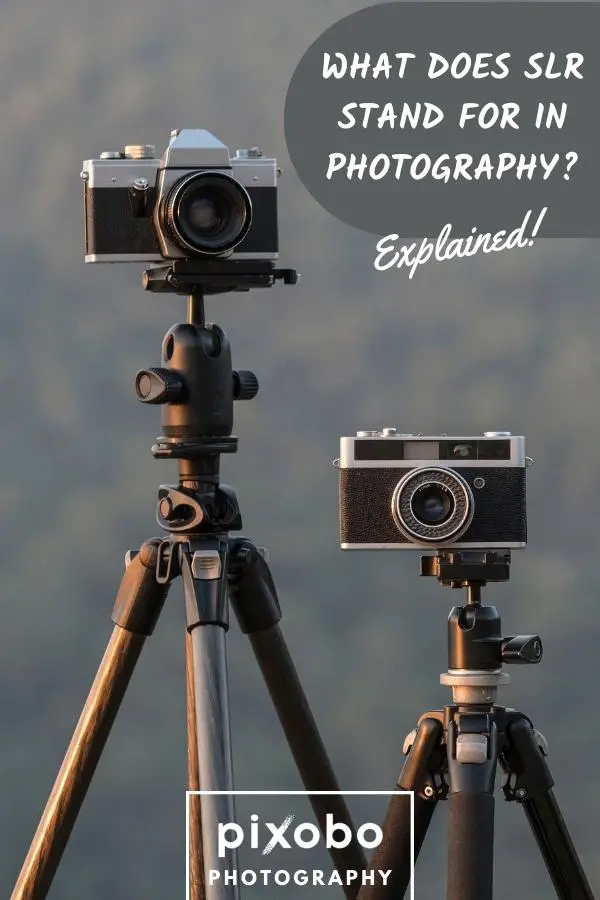Without a doubt, SLR cameras became a major breakthrough in photography. Young people of today may have not seen an actual roll of film and will probably never see one. But then, it is not to say that SLR cameras are obsolete. In fact, a lot of hobbyists and professionals still prefer using analog cameras over digital ones.
SLR film cameras might be considered outdated by today’s technology, but they not really. The “camera click” sound may be boring to people who love taking selfies and posting them online.
But then, SLR photography is more than just taking photos; it is an art. SLR cameras can teach you how to be meticulous, imaginative, and patient in taking photos.
Unlike digital cameras, analog cameras have mechanical parts, which means that you can easily see how they work. So, if photography is your passion, there is no better way to start than with an SLR camera. In this article, you will learn how SLR cameras work and the similarities and differences between them and the other types of cameras.
Table of Content
What Exactly Does SLR in Photography Stand For?
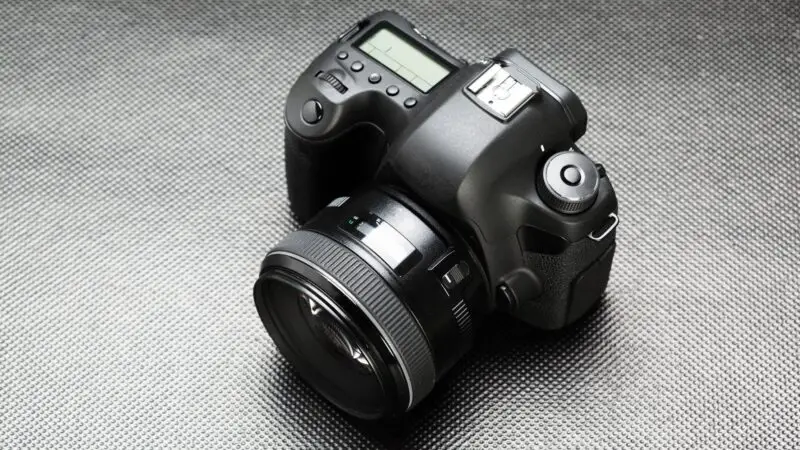
In photography, SLR stands for “single lens reflex,” which refers to the way SLR cameras work. As the name implies, SLR cameras have a single lens the user looks at and takes a photo of. As a reflex camera, the movable mirror reflects the light that passes through the lens. The term “reflex” has nothing to do with the mirror’s movement.
Before SLR cameras were invented, people being photographed should sit still for several minutes before the film could record the image. A classic example was the 1847 photo of Abraham Lincoln when he was elected to Congress. It was only in the 1870s when cameras had a fast-moving shutter. SLR cameras began to boom in the 1950s.
Brief History of SLR Cameras
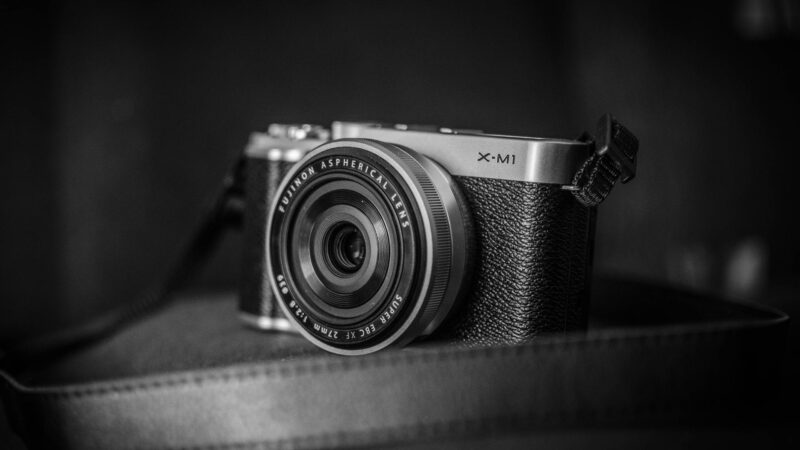
German author Johann Zahn designed the world’s first handheld reflex camera back in 1685. But it was French inventor Joseph Nicéphore Niépce who constructed the first photographic camera in 1816 and is considered the inventor of photography. He also captured the first photograph titled “View from the Window at Le Gras” in 1826.
In 1861, English photographer and inventor Thomas Sutton created the first-ever SLR camera and patented it. This lens allows photographers to use multiple types of lenses for the same camera.
Shortly, several other designs of SLR cameras followed. This includes the Zeus Mirror Camera and Kine Exakta, the world’s first 35mm SLR camera.
In the 1920s, German company Franke & Heidecke developed the twin-lens reflex camera (TLR). The design seems to have lots of benefits over SLR cameras since they have a simpler mechanism and are considerably cheaper. But then, photographers find SLR cameras easier and more convenient to use. Hence, TLR cameras fell out of favor.
The world’s first 35mm SLR camera was the Kine Exakta, which was designed by Karl Nüchterlein. It was released to the public in 1936 by a German company named Ihagee Kamerawerk.
Although the camera was phenomenal at that time, users still could not view the image through the viewfinder without mirroring the image from right to left.
American electrical engineer Steven Sasson invented the world’s first digital camera (DSLR camera) in 1975. At that time, he was working at Eastman Kodak Company. The first DSLR camera weighed 8 lbs (3.62 kilos) and was as big as a toaster. The 10,000-pixel image was recorded on a cassette tape, and the entire process took 23 seconds.
How Do SLR Cameras Work?
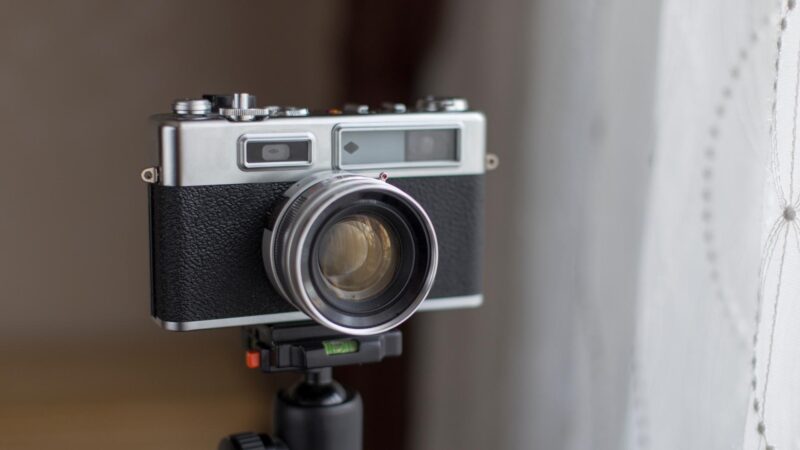
All SLR cameras have a slanted mirror between the shutter and the lens. They also have a glass prism that reflects the image from a ground glass focusing screen to the camera.
While taking a photo, the light that is reflected by your subject will enter the camera lens. It will bounce off the mirror and then upwards to the glass prism.
When using an SLR camera, you can see through the lens the image that you will shoot. Once you press the shutter button, the mirror will flip out to reveal the sensor, so the actual image is projected into the exposed film.
The mirror, which moves up and down, is connected to the shutter timer system. Hence, it stays open while the shutter is open.
Every time you take a photo, the viewfinder is quickly blacked out to prevent extra light from entering the eyepiece. Once the shutter closes, the mirror goes down again.
To control the amount of light that enters the lens, SLR cameras also have a lens aperture. This lens opening is very important since this is where light passes through the camera.
A large aperture will have a lighter image, while a small aperture will give you a darker image. Larger apertures also result in a shallow depth of field. This means that the subject is in focus and has a sharp image, and the background is out of focus and has a blurred image. This technique is usually applied when taking photos for portraits.
Pros and Cons of SLR Cameras
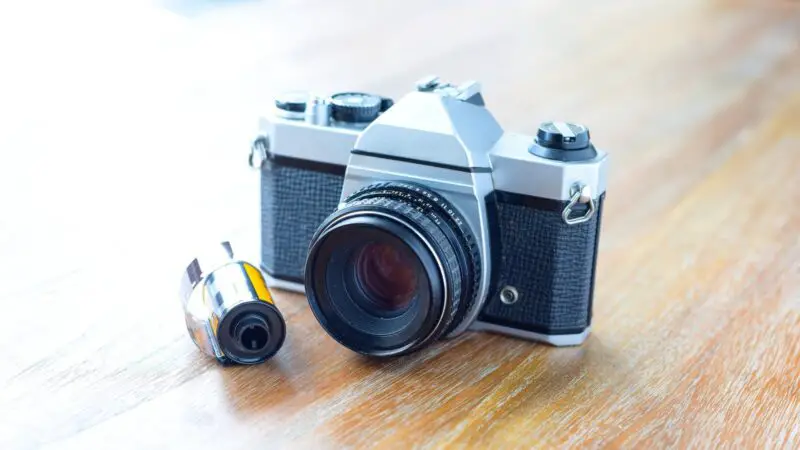
SLR cameras have been phenomenal for photography enthusiasts and professionals. As time passes by, camera manufacturers have improved a lot in their features and designs.
Not to mention, the photography industry has created tons of jobs. However, technology is far from perfect. Here are the pros and cons of an SLR camera:
SLR Camera Advantages
- The subject can be seen through the viewfinder. This means that you can control the brightness and frame of the image.
- SLR cameras allow you to choose the desired aperture (focal length or f-number), shutter speed, and more accurate focus.
- You don’t need additional viewfinders to view different focal length
- SLR cameras use interchangeable lenses. This means that you can choose the lens you want.
- Most SLR cameras have an AF (Auto Focus) feature, which is much faster than manual focus.
SLR Camera Disadvantages
- SLR cameras tend to be bigger and heavier than other camera designs.
- The viewfinder is blacked out while the photo is being taken. This could be a problem during a long exposure.
- Since SLR cameras are mechanically designed, they produce a “camera click” sound which can be annoying, especially if you need to be quiet.
- SLR cameras use film. Therefore, you can only see the actual photo once the film is developed, which may take hours or even days.
SLR Cameras vs. Point-and-Shoot Cameras: What’s the Difference?
Point-and-shoot (P&S) cameras are the simplest type of cameras and have automatic functions. Here, users will simply point the camera to the subject and click the button to shoot.
Also called compact cameras, point-and-shoot cameras are for simple tasks. Here are the main differences between SLR cameras and point-and-shoot cameras:
- SLR cameras have viewfinders, while most point-and-shoot cameras only rely on LCD screens for image framing.
- Point-and-shoot cameras are ideal for beginners and casual users, while SLR cameras are for experienced users and professionals.
- SLR cameras have interchangeable lenses, while point-and-shoot cameras have built-in lenses. Hence, you cannot replace them.
- Point-and-shoot cameras are automatic, while SLR cameras have manual settings that need some skills.
- SLR cameras have larger image sensors, thus producing higher quality images than point-and-shoot cameras.
- SLR cameras have an adjustable shutter speed, while the shutter speed of point-and-shoot cameras is automatic and cannot be changed manually.
- Since SLR cameras are manually operated, users have more control over the settings.
- SLR cameras almost have no lag, which means they are better with moving subjects such as children playing.
- Point-and-shoot cameras are smaller and lighter than SLR cameras.
- In general, point-and-shoot cameras are cheaper than SLR cameras.
SLR Cameras vs. DSLR Cameras: What’s the Difference?
The letter “D” in DSLR stands for “digital,” which means that DSLRs are more advanced than SLR cameras. Both of them have interchangeable lenses and use reflex mirrors.
This means that the principle of taking photos is the same. Nevertheless, DSLR cameras differ from SLR cameras in many ways. Here are the most significant ones:
- Captured images in SLR cameras are stored in film rolls, while images in DSLR cameras are stored in memory cards.
- DSLR cameras can take much more photos than SLR cameras and with less effort.
- With DSLR cameras, you can immediately preview the image. But with SLR cameras, you have to wait several days before you see the photos.
- Digital photo editing is significantly faster than analog photo editing.
- SLR cameras are bigger and heavier than DSLR cameras since the former have mechanisms.
- You can record videos using DSLR cameras, while SLR cameras are limited to taking photos only.
- Despite having improved technology, SLR cameras produce a higher quality of images as compared to DSLR cameras.
- SLR cameras produce tangible photos that can last a lifetime. On the other hand, digital photos can be accidentally deleted. Scanned photos don’t have the same quality as the original photo.
Related: Best Entry-Level DSLR Cameras
SLR Cameras vs. Mirrorless Camera: What’s the Difference?
As the name suggests, mirrorless cameras don’t have reflex mirrors like SLR and DSLR cameras. Instead, the image is fed directly from the sensor to the electronic viewfinder (EVF) or digital screen.
Here, you can also see the camera settings, such as aperture and shutter speed. Here are the main differences between SLR and mirrorless cameras:
- Due to their design, mirrorless cameras are much smaller and lighter than SLR cameras and DSLR cameras.
- With no mirror that goes up and down, mirrorless cameras have faster frame rates and can track moving objects better.
- Mirrorless cameras are also digitally operated; they have Bluetooth and Wi-Fi connections. SLR cameras are analog, though.
- With mirrorless cameras, you can easily transfer photos to another digital device. With SLR cameras, you should scan them to have a digital copy.
- Since digital screens use electricity, mirrorless cameras have shorter battery life than SLR cameras.
- Both mirrorless and SLR cameras allow users to change the lens, but the former has a very short focal flange distance. This means that you have a wider selection of lenses.
- Generally speaking, mirrorless cameras offer more features than SLR cameras. In fact, they are also more advanced than some DSLR cameras.
- Image quality from SLR cameras is still better than that of mirrorless cameras.
Related: Best Entry-Level Mirrorless Cameras
Are Smartphone Cameras Better Than SLR Cameras?
The answer depends on the purpose of the person taking the photos. If your purpose is to take photos (selfies, especially) and you want to see the result at once and share it with others, smartphone cameras are a better choice. Not to mention, you can also take an almost unlimited number of photos using a smartphone camera.
These days, smartphones are equipped with AI (Artificial Intelligence) processors for their cameras. True enough, these AI cameras offer a lot of features that can help photographers.
Still, SLR cameras are far better than them when it comes to image quality. Traditional cameras require more work, but the result can be very satisfying.
Related: 5 Reasons Why Some Phone Cameras Are Better Than a DSLR Camera
Summary
Social media plays a major role in the continuous disappearance of SLR photography. DSLR cameras are also becoming obsolete, and mirrorless cameras are said to be the future.
In that case, are SLR cameras now really considered things of the past? Not really; as long as there are people who love keeping photos on frames and wallets.
